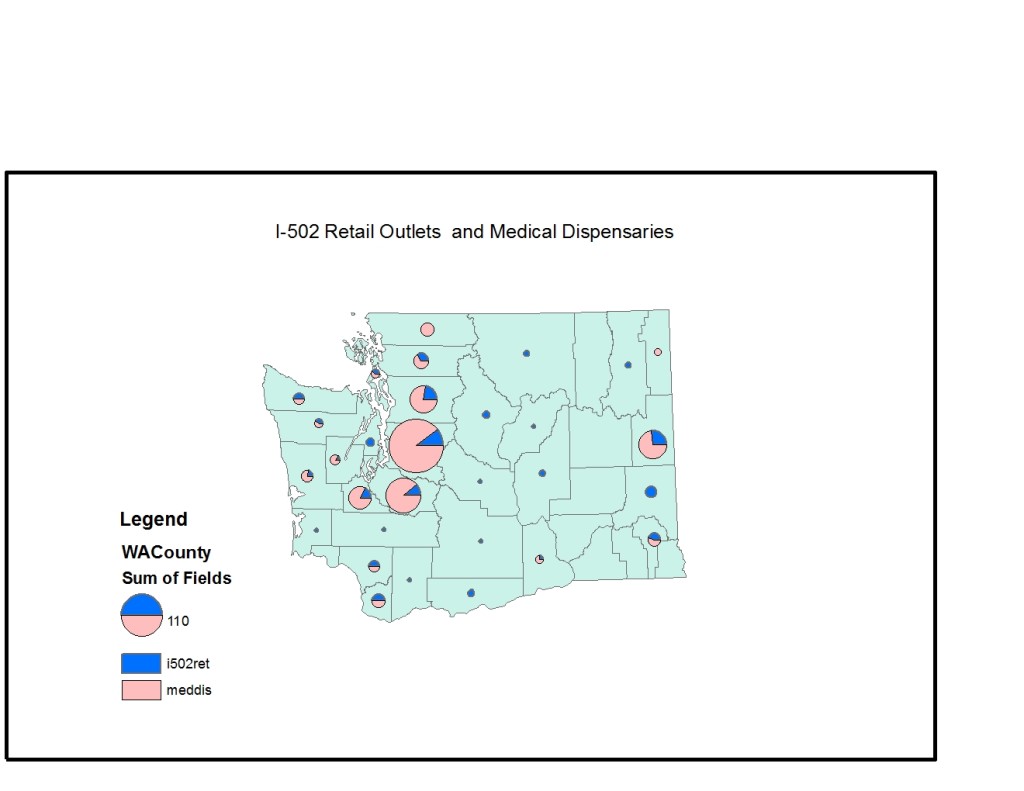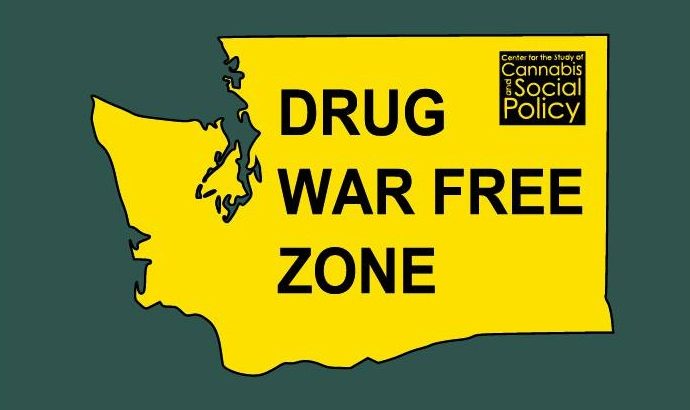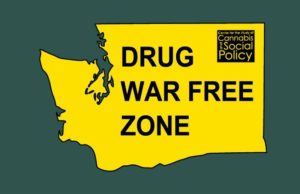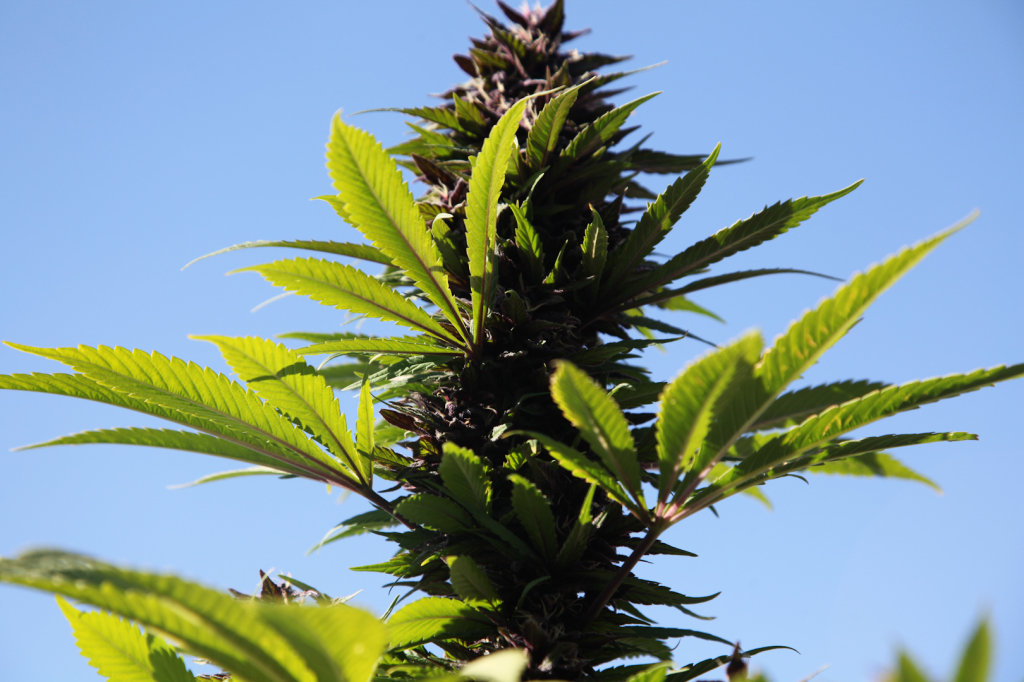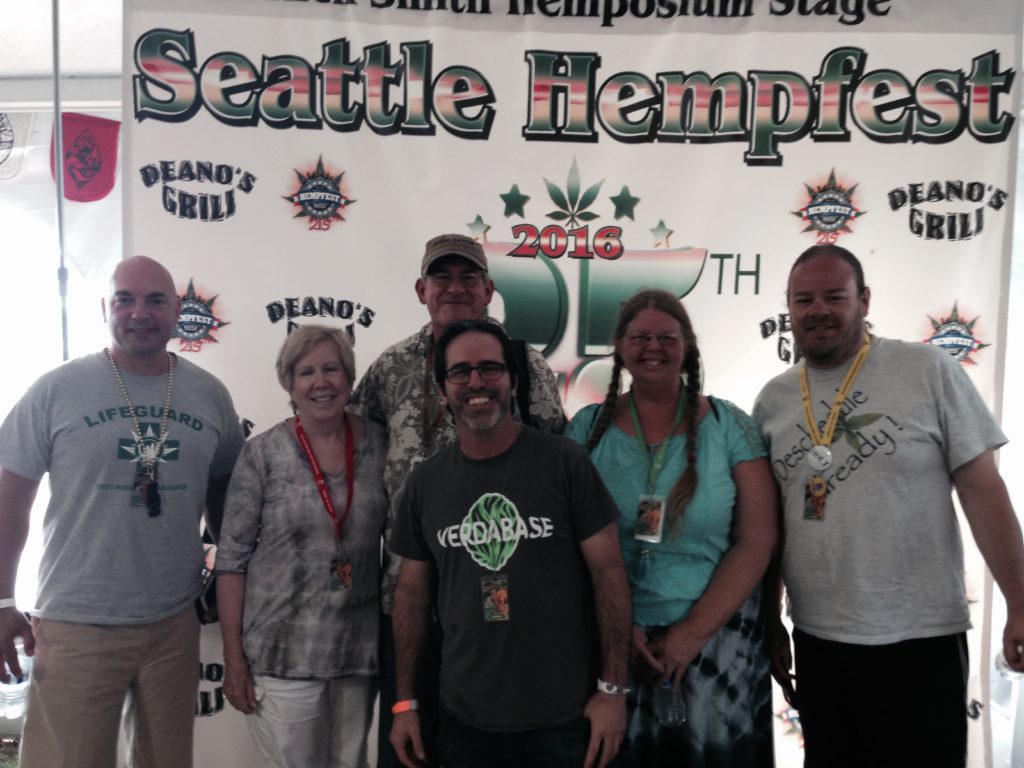
by Dominic Corva, Social Science Research Director
This post is an exercise in returning to themes initiated for the summer, just in time for the fall. My writing process has always been difficult and spastic, coming in torrents of prose or long dry stretches where for any number of reasons I just can’t complete a focused few paragraphs. The reasons themselves don’t matter, but there are strategies to shift states of incompletion and it’s time to deploy them. So today we’ll start with a little of where we left off, a little of where we are, and maybe we’ll get to a little of where we are going.
Where we left off:
The book project has evolved from one that centered the experience of “medical transitioners” to one that should centers the persistence of prohibition culture in shaping policy and market outcomes related to Phase I of Legal Cannabis in Washington. The biggest reason for this is that so many of my medical transitioners did not, in fact, transition — certainly not by July 1, and for several not at all.
The assumption that the stories would logically inflect on July 1, 2016, turned out to be unstable and problematic. The main way this was problematic was that it focused too much on ownership as an indicator of transition, when so many people who lost their livelihoods as relatively autonomous and entrepreneurial actors — owners included — have adjusted by finding a place in the legal market as waged workers, managers, and sales people.
Or, many have started to find a place. There are quite a few false starts in those stories, as people who once cultivated very autonomous or independent livelihoods find it pretty difficult to function in rigid, relatively poorly paid positions in the formal economy. Some are thriving, of course, but it has been surprising to me how many experienced, knowledgable medical/informal market budtenders have struggled to land a basic budtending job in the legal system.
Or, maybe it’s not surprising. Maybe I’ve been using the wrong tools to understand the cultural dynamics of transformation. Maybe it’s not about, or only partially about knowledge and experience. If it’s not, then we might need to think outside the toolbox at hand. We might need to think structurally, rather than individually, about the cultural politics of transition and transformation.
To do that, we are going to need to think about the politics of social exclusion in a way that decenters cannabis itself. After all, if dynamics of inclusion in the new market were about “normalizing” cannabis, as I keep hearing from self-identified activists, then we should see some sort of demand for people who really know and have experience with cannabis in the new legal market. We should see policy that caters to them, in deference to the vast ignorance about the plant present in “normal” society.
The fact that we don’t — that we have seen the absolute opposite — highlights a fundamental contradiction that shapes weird policy and market dynamics in a field that’s supposed to be characterized by “normalization.” The State clearly wants to normalize cannabis commerce, because normalization means taxation and therefore revenue capture in a cash-starved public sector. I 502 market actors — increasingly defined by investor-owners — want to normalize cannabis commerce, because normalization means income or return on investment (ROI).
There are a few clearly defined limits on “normalization” shared by the State and investors: normalization means “responsible adult (21+) consumption.” Normalization means at least the appearance of regulation, although it’s pretty clear that the promise of regulation is a work in progress. The former is probably the single greatest inhibitor of the latter, as I have pointed out many times that the “black market” is significantly under-21 consumption and has been since the 1960s.
This contradiction between youth culture as the driving force of cannabis market creation and the impossibility of its normalization under a “like alcohol” approach to policy begins to point us in the direction of another toolbox, other tools for understanding dynamics of exclusion under evolving conditions of cultural prohibition. It decenters cannabis by shifting our analytic optic towards culture and society at large: what about the children becomes what about the cultural economy, in which intergenerational conflict plays such a significant role.
The question resolves into less blurry focus when that question shifts, for me, into the following: why must cannabis people be legally treated like children? Children aren’t allowed to make their own decisions, they aren’t responsible, they must learn discipline, they must be watched over and controlled because there’s something about them you just can’t trust, because they haven’t grown up yet, because they aren’t responsible.
The problem here is not the children, or in this case the culture that gets treated like children: it’s the social consensus about what’s responsible or not — what does normalized responsibility look like? Who bears the burden of that cultural adjustment? Is it as simple as translating alcohol responsibility and alcohol culture to cannabis responsibility and cannabis culture? Is it about “law and order,” when legal cannabis policy poses such an existential threat to the foundation of drug war policy — which is demonstrably racist, exclusionary, authoritarian, and genocidal?
What would it mean to turn policy discourses of responsibility and normalization on their cultural heads — to think about the children as having been right, all along?
We are a very long way from doing any such radical, revolutionary thing, of course. But it would mean re-centering the radical purpose of I 502 legalization, which was about ending the authoritarianism and harms of the drug war itself, rather than excluding the people whose “irresponsible” behavior provided the cannon fodder that brought us to the possibility of social peace. Of course, it’s not so simple — excluded people are welcome in the new legal landscape, as long as they can clean up their acts, behave responsibly, be a normal wage worker, and so forth. So what’s the big deal?
The big deal is that it’s not about the normalization of cannabis, not about the exclusion of cannabis experience from policy and market leadership. It’s about something much bigger and broader — the development and production of socioeconomic exclusion itself, in society at large.
And that’s where we are going with this, readers. We have to engage social theories of the underclass, the lumpen, the dangerous classes, the precariat. We have to think about this in the broader context of social change. Where the heck in the world are we, after all? What is the world coming to? How can we make a difference that matters to more than just cannabis owners and consumers? Because if we aren’t doing that, we aren’t doing cannabis and social policy, that’s for sure.

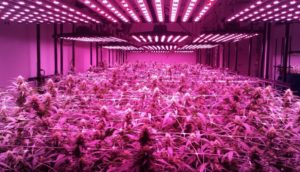
 July 2016: All medical stores have been shut down or raided and patients have been asked to go to adult-use stores to secure their medications. Medical cannabis has been integrated into the 502 system.
July 2016: All medical stores have been shut down or raided and patients have been asked to go to adult-use stores to secure their medications. Medical cannabis has been integrated into the 502 system. Once it’s harvested, trimmed and cured the harvested totals of flower, other (trim), and waste are entered into the system. This is where medical starts to change from adult use. You have to declare that the harvest is medical and get it tested for heavy metals and pesticides. If it passes, then it is sorted into 3 pound lots instead of 5 pound lots (which is required for adult use) and those are sent in for microbial testing. Don’t even get me started on the lots. In our case, we have small rooms that are all subject to the same nutrients, water regime and environment. When we have a 50 pound harvest, we have to pay for ten tests, even though all the plants were treated exactly the same. For one harvest, we’ve had test results vary up to seven percent in total cannabinoids. Furthermore, we can’t average the results, so you have varying results with retailers and consumers requesting the highest test results, when it’s all exactly the same product.
Once it’s harvested, trimmed and cured the harvested totals of flower, other (trim), and waste are entered into the system. This is where medical starts to change from adult use. You have to declare that the harvest is medical and get it tested for heavy metals and pesticides. If it passes, then it is sorted into 3 pound lots instead of 5 pound lots (which is required for adult use) and those are sent in for microbial testing. Don’t even get me started on the lots. In our case, we have small rooms that are all subject to the same nutrients, water regime and environment. When we have a 50 pound harvest, we have to pay for ten tests, even though all the plants were treated exactly the same. For one harvest, we’ve had test results vary up to seven percent in total cannabinoids. Furthermore, we can’t average the results, so you have varying results with retailers and consumers requesting the highest test results, when it’s all exactly the same product.
 Now the question becomes if you don’t get medically certified, how do patients KNOW your product is as clean as you say it is? There are a couple options. At Trail Blazin’ Productions, we have taken the step to have all of our strains tested for pesticides and we post those pesticide results on our website. We also post our terpene profiles and potency tests so that we are truly transparent. All of these results can be linked back to harvest date and lot number on the package. Another option is to get certified by the Safe Cannabis Project or Natural Clean Cannabis. Basically, a neutral third party selects a sample, the grower pays for the pesticide tests, and if you pass, you get a little logo and a QR code that the consumer can scan to know that the product is within the regulations for pesticides. These are all great options that help consumers make better choices with their cannabis spending money.
Now the question becomes if you don’t get medically certified, how do patients KNOW your product is as clean as you say it is? There are a couple options. At Trail Blazin’ Productions, we have taken the step to have all of our strains tested for pesticides and we post those pesticide results on our website. We also post our terpene profiles and potency tests so that we are truly transparent. All of these results can be linked back to harvest date and lot number on the package. Another option is to get certified by the Safe Cannabis Project or Natural Clean Cannabis. Basically, a neutral third party selects a sample, the grower pays for the pesticide tests, and if you pass, you get a little logo and a QR code that the consumer can scan to know that the product is within the regulations for pesticides. These are all great options that help consumers make better choices with their cannabis spending money.